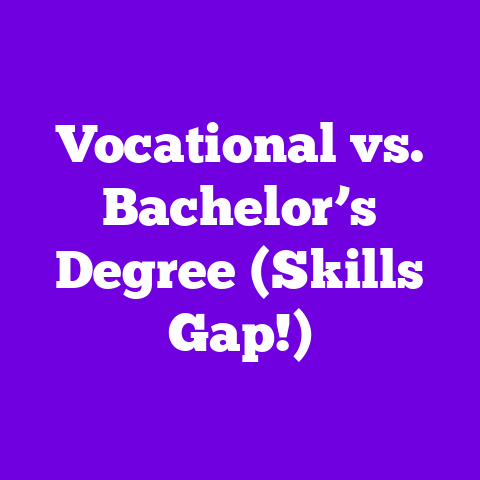Nursing Degree USA: Int’l Students (Visa Pipeline!)
With the world needing more healthcare pros than ever, and the USA being a hotspot for top-notch nursing education, it’s a smart move.
Plus, the return on investment (ROI) is seriously impressive.
Think job security, great pay, and the chance to really make a difference.
In this article, I’m going to walk you through everything.
From the best nursing programs to the visa process and what the future holds for nurses in 2025.
Ready to dive in? Let’s go!
Section 1: The Value of a Nursing Degree in the USA
1.1 Current Job Market
Let’s talk numbers. The nursing job market in the USA is booming.
The Bureau of Labor Statistics projects a growth of 6% from 2022 to 2032, which is about average for all occupations.
This means roughly 203,200 new jobs will open up each year.
Why such high demand? Well, the population is getting older, and older folks need more healthcare.
Plus, many nurses are reaching retirement age, creating even more vacancies.
It’s a perfect storm of opportunity for aspiring nurses like you!
1.2 Financial Benefits
Money matters, right? As a registered nurse (RN) in the USA, the median annual salary was about $81,220 in May 2022.
But that’s just the starting point.
Advanced Practice Registered Nurses (APRNs), like nurse practitioners, can earn even more.
Their median annual salary was around $125,900 in May 2022.
Now, let’s compare this to other countries.
In many European nations, the average nursing salary is significantly lower.
For example, in some Eastern European countries, nurses might earn only a fraction of what their US counterparts do.
This makes the USA a financially attractive destination for international nursing grads.
1.3 Career Advancement Opportunities
A nursing degree isn’t just a job; it’s a career ladder.
You can specialize in areas like:
- Critical Care
- Pediatrics
- Oncology
Each specialization can boost your earning potential and job satisfaction.
Plus, there are leadership roles like nurse manager or director of nursing.
These positions not only offer higher pay but also the chance to shape healthcare policies and mentor other nurses.
I’ve seen nurses climb from bedside care to executive positions within hospitals, all thanks to their education and dedication.
Section 2: Nursing Programs for International Students
2.1 Overview of Nursing Programs
In the USA, you’ve got a few main paths to becoming a nurse:
- Anatomy
- Physiology
- Pharmacology
- Patient Care
The BSN program typically includes more coursework in leadership, research, and public health, making it a solid choice for career advancement.
2.2 Accreditation and Quality Assurance
Here’s a pro tip: always choose an accredited nursing program.
Accreditation means the program meets certain quality standards set by recognized organizations like the:
- Accreditation Commission for Education in Nursing (ACEN)
- Commission on Collegiate Nursing Education (CCNE)
Graduating from an accredited program is crucial because:
- Employers often prefer or require it.
- It ensures your education is up to par.
- It can make it easier to transfer credits or pursue advanced degrees.
I always tell students to double-check a program’s accreditation status before applying.
2.3 Top Nursing Schools
So, where should you apply? Here are a few top nursing schools in the USA that are popular among international students:
- Johns Hopkins University School of Nursing: Known for its research and global health initiatives.
- University of Pennsylvania School of Nursing: Offers a wide range of specialized programs and clinical experiences.
- Duke University School of Nursing: Focuses on innovation and leadership in nursing education.
- University of Washington School of Nursing: Strong emphasis on community health and underserved populations.
These schools not only offer excellent education but also have resources and support systems for international students.
I’ve seen many international students thrive in these environments, thanks to the schools’ commitment to diversity and inclusion.
Section 3: The Visa Pipeline for International Nursing Students
3.1 Understanding Visa Categories
Navigating the visa process can seem daunting, but it’s definitely doable.
Here are the main visa categories for international nursing students:
- F-1 Student Visa: The most common visa for students pursuing academic degrees in the USA.
- J-1 Exchange Visitor Visa: Used for exchange programs, which might include clinical rotations or research opportunities.
The F-1 visa is usually your best bet for a full nursing degree program.
It allows you to study in the USA and, after graduation, apply for Optional Practical Training (OPT).
3.2 Application Process
Alright, let’s break down the F-1 visa application process:
- Get Accepted: First, you need to be accepted into a Student and Exchange Visitor Program (SEVP)-approved nursing program.
- Receive I-20: Once accepted, the school will issue you an I-20 form, a Certificate of Eligibility for Nonimmigrant Student Status.
- Pay the SEVIS Fee: You’ll need to pay the Student and Exchange Visitor Information System (SEVIS) fee before your visa interview.
- Apply for the Visa: Fill out the DS-160 form, the online nonimmigrant visa application.
- Attend the Interview: Schedule and attend an interview at the US embassy or consulate in your home country.
- Visa Approval: If all goes well, your visa will be approved, and you can start planning your trip to the USA!
I always advise students to start this process early, as visa processing times can vary.
3.3 Transitioning to Work Visas
So, you’ve graduated. Now what?
You can apply for Optional Practical Training (OPT), which allows you to work in the USA for up to 12 months after graduation.
If you’re in a STEM-designated program (some nursing specializations qualify), you can even extend your OPT for an additional 24 months!
After OPT, many nurses transition to an H-1B visa, a work visa for specialized occupations.
However, the H-1B visa is competitive, and you’ll need an employer to sponsor you.
Another option is to pursue a green card through employer sponsorship, which can lead to permanent residency.
I’ve helped many students navigate these pathways, and it’s all about planning and networking.
Section 4: Anticipated Trends and Changes for 2025
4.1 Evolving Nursing Roles
By 2025, nursing will look a bit different.
Technology is rapidly changing healthcare.
Think:
- Telehealth
- Electronic Health Records (EHRs)
- AI-powered diagnostic tools
Nurses will need to be tech-savvy and comfortable using these tools.
Also, nursing informatics, the integration of nursing science with data and analytics, will become even more important.
I encourage students to take courses in these areas to stay ahead of the curve.
4.2 Immigration Policies
Immigration policies are always a hot topic.
It’s tough to predict exactly what will happen by 2025, but it’s crucial to stay informed.
Keep an eye on changes to:
- Visa regulations
- OPT rules
- H-1B visa quotas
I recommend following reputable sources like the Department of Homeland Security and immigration law firms for the latest updates.
4.3 Global Health Initiatives
Global health challenges, like pandemics and chronic diseases, are shaping nursing education.
There’s a growing emphasis on:
- Cultural competence
- Global health ethics
- Collaborative care models
International students bring unique perspectives and experiences to these discussions.
You can contribute to global health efforts by:
- Participating in international clinical rotations
- Conducting research on global health issues
- Advocating for health equity
I’ve seen international students lead amazing projects that address healthcare disparities in their home countries and beyond.
Section 5: Personal Testimonials and Success Stories
5.1 Interviews with International Nursing Students
Let’s hear from some international nursing students!
I recently spoke with Priya, a student from India studying nursing at the University of Michigan.
She said, “The biggest challenge was adapting to a new healthcare system, but the support from my professors and classmates has been incredible.”
Another student, Kenji from Japan, shared, “I was nervous about the language barrier, but the university offered excellent language support services, and I quickly improved.”
Their advice? Don’t be afraid to ask for help and get involved in campus activities.
5.2 Alumni Success Stories
Here’s some inspiration:
Meet Maria, a graduate from the University of Pennsylvania School of Nursing.
She’s now a nurse practitioner specializing in cardiology.
She credits her success to the rigorous training she received and the networking opportunities provided by the university.
Then there’s David, an alumnus from Johns Hopkins.
He’s working on developing telehealth solutions for rural communities in his home country of Nigeria.
These stories show that a nursing degree in the USA can open doors to incredible opportunities, both in the USA and around the world.
Conclusion
So, there you have it! Pursuing a nursing degree in the USA as an international student is a strategic investment in your future.
With high demand, excellent earning potential, and diverse career paths, it’s a decision that can pay off big time.
Yes, the visa process can be complex, and the healthcare landscape is constantly evolving.
But with careful planning, dedication, and a passion for helping others, you can achieve your dreams.
I encourage you to consider the long-term benefits and opportunities that come with obtaining a nursing degree in the USA.
It’s not just an educational journey; it’s a vital step toward a successful and fulfilling career in healthcare.
Ready to take the leap? I’m here to help you every step of the way!






